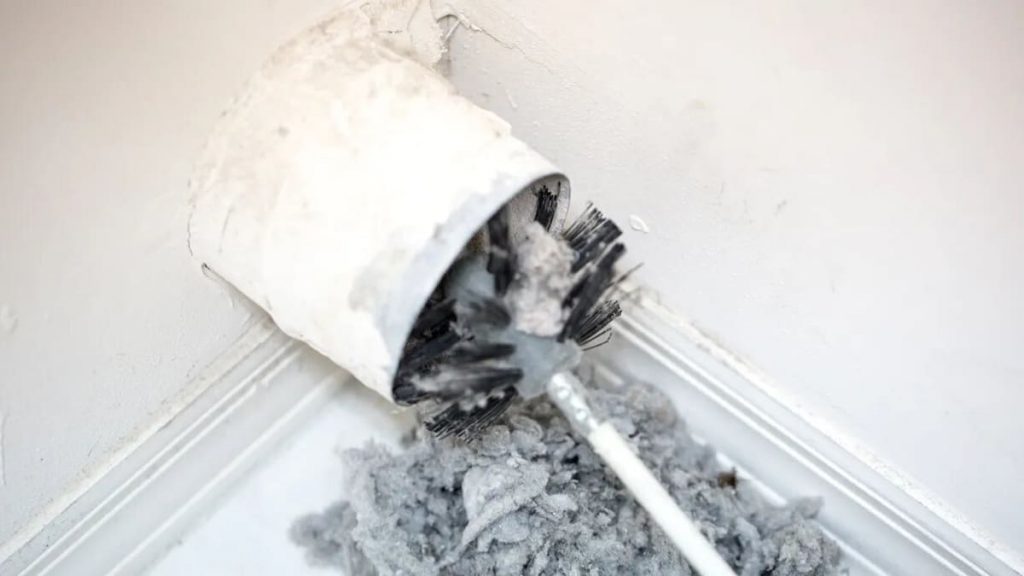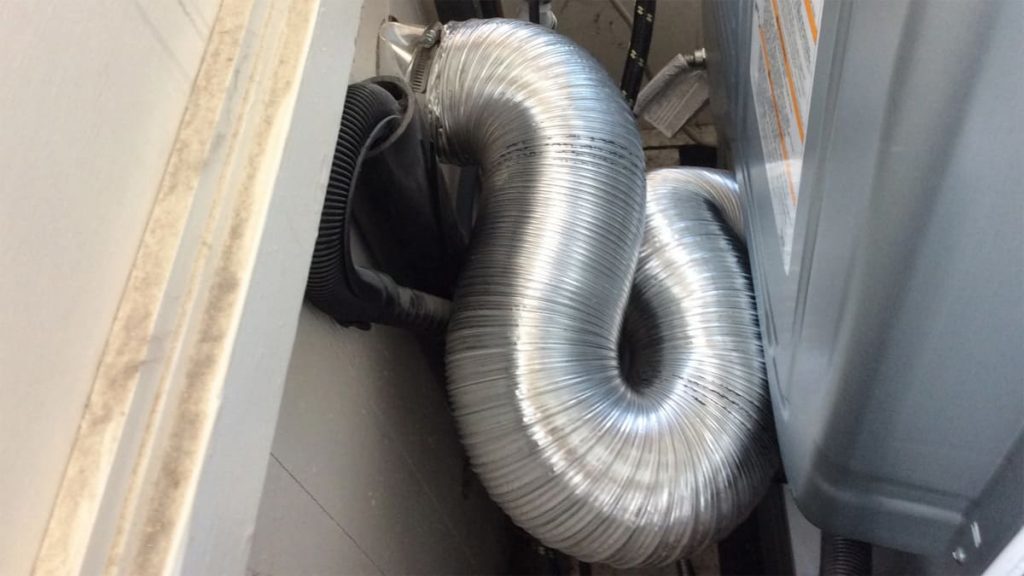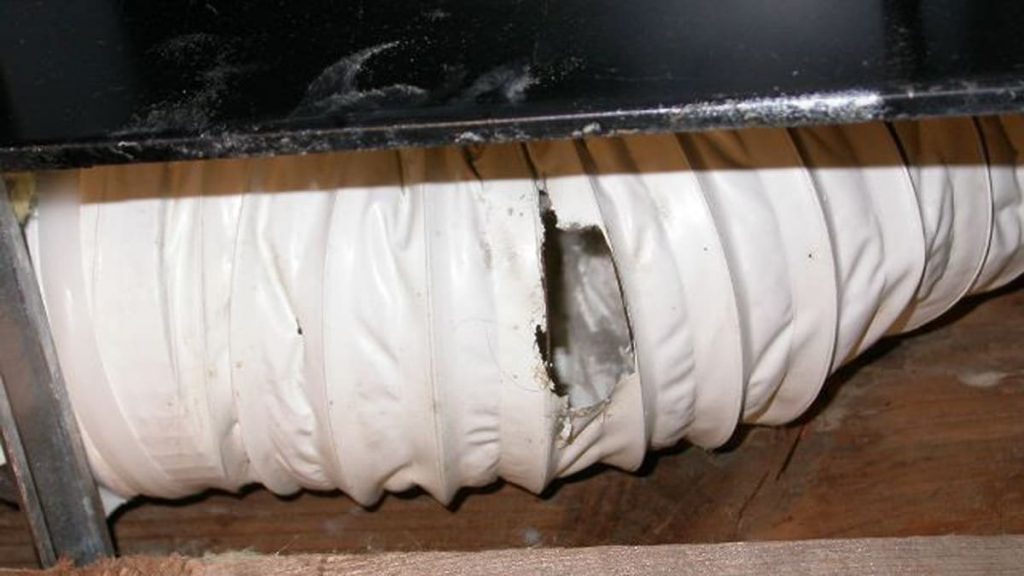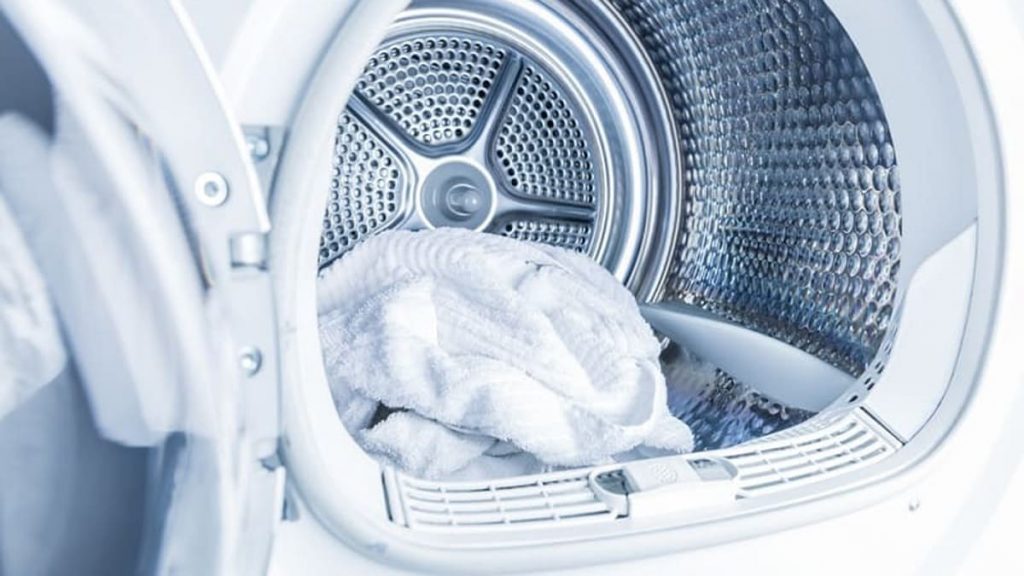Dryers are increasingly used in everyday life, and people fully appreciated its advantages. During operation, a problem often arises when a puddle forms under the device. If the dryer starts to leak, you need to fix the problem as soon as possible. The first thing to do is to disconnect household appliances from the electrical network. This will protect you from electric shock.
Water leakage is observed in such cases:
- the drain hose is torn or bent;
- sealing gaskets are worn out;
- the machine is not properly connected to the drain system;
- debris (fluff, dirt) has accumulated in the ventilation system and created a plug;
- craftsmen incorrectly designed the ventilation system;
- the drain pump is out of order;
- the elements of the alarm system are broken: water drain sensor, control board;
- Condensation forms on the outlet pipe;
- the cover of the ventilation pipe is broken, due to which moisture comes from the external environment.
Also, water leakage can be observed with an absolutely serviceable dryer. This happens when you load too many clothes that are too wet. Read on to learn more about the most common problems and how to solve them.
Lint and dirt plugs in the ventilation system
In order for the dryer to work without harm to its parts, it must periodically release hot air from the drum. This action avoids overheating and maintains a stable temperature in the drum. Hot air exits through the ventilation pipe and moves through the air ducts to the hole that leads to the street.
The heated air coming from the dryer always contains a certain amount of fluff and lint. They get into a humid environment and stray into lumps. This happens because hot air mixes with cold air in the ventilation, and moisture droplets form. Some of these “by-products” settle on the walls of the duct, and over time, the knocked-down pile is layered. So the ventilation is clogged, and the exhausted hot air ceases to exit normally.
What should be done:
- clean the ventilation pipe with a brush: it is important to remove all fluff and deposits from the walls;
- make it a rule to maintain the ventilation system at least once a year for preventive maintenance.
After that, the draft of hot air will improve and it will not return to the drum.
Incorrectly installed ventilation system
In order for the air exhaust system to work as efficiently as possible, the pipe must be located directly in the horizontal plane. Then the exhausted hot air flow will almost completely go out into the external environment, without lingering on turns. If the duct is winding, then lint and moisture will always collect in poorly passable areas.
How to understand that the water is flowing precisely because of problems with ventilation? Condensation will collect in the drum and water will drip from the external vent. To prevent this from happening, design the ventilation system so that its external openings face the street.
In some cases, vents lead to an attic or other enclosed space. This causes increased humidity in the room, which leads to mold. In such a design, access to the exhaust vent can be difficult, making it impossible for you to diagnose and know if the problem is actually in improperly designed ventilation.
DO NOT USE plastic or ribbed tubes when creating a ventilation system. In such structural elements, more moisture is formed than in metal ducts with smooth walls. The latter are optimal for ventilation systems, because they remove hot air faster, and, accordingly, less condensate falls on their walls.
Poor or missing dryer vent pipe insulation
This problem is more common in countries with cold climates. Hot air that moves into the external environment must be mixed with cold air directly at the exit to the outside. If the ventilation pipe is cold along its entire length, due to the temperature difference, condensate begins to fall out already halfway to the outlet. It settles on the walls, accumulates, and then flows into the dryer.
What is the solution to this problem? It is necessary to insulate the ventilation pipe of the dryer along the entire length. Due to this, the temperature difference will be minimal, and hot air will have time to escape into the external environment without forming condensate.
Another problem that can lead to condensation is a crack in the ventilation pipe. Through it, cold air enters in large quantities and mixes with the hot stream. To get rid of the problem, you need to isolate the crack (if it is small) or completely change the vent pipe.
Damage to the ventilation cover (damper)
Some ventilation systems are equipped with a cover that is located at the outer end of the pipe. It only opens when hot air from the dryer comes out. At rest, the ventilation system is closed, which prevents cold air from getting inside.
When the damper breaks, the insulation is broken. From the external environment, rain, snow, fog can get into the ventilation pipe. Moisture on the walls of the pipe goes down and flows to the floor under the dryer. When diagnosing a problem, you need to make sure that the damper is intact and opens and closes freely. In the event of a breakdown, the cover must be replaced or repaired.
Water collection system not working
Many dryers are equipped with a system for collecting excess moisture. It consists of a condenser and a small container into which water flows. When the container fills with liquid, the vane motor is activated and pumps the water into the collection container.
Leaks occur when cracks appear in the system or its elements are contaminated. To fix the problem, you need to clean all the components: condensate pump, hoses, and collection container. It is also important to check the correct operation of the sensor, which gives a signal that the collection container is full. Lastly, inspect the seal on the back of the dryer and replace it with a new one if necessary.





